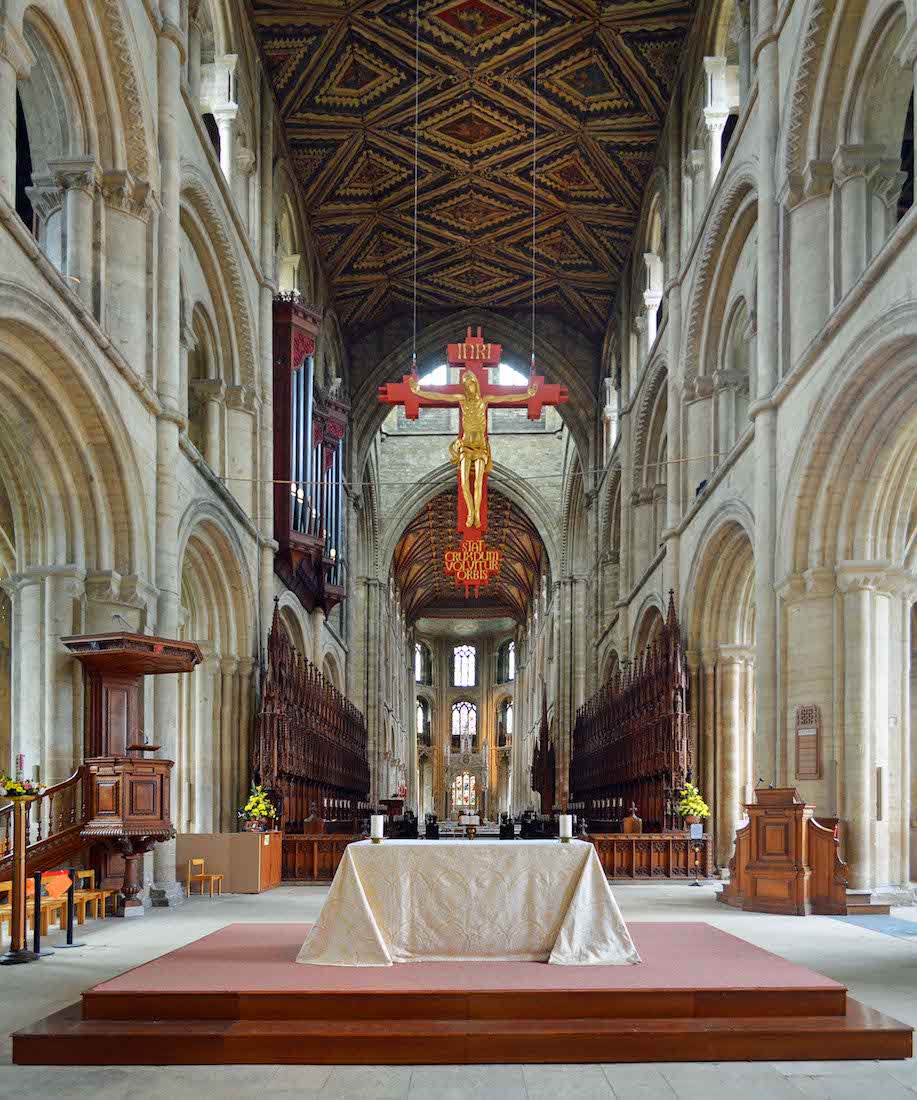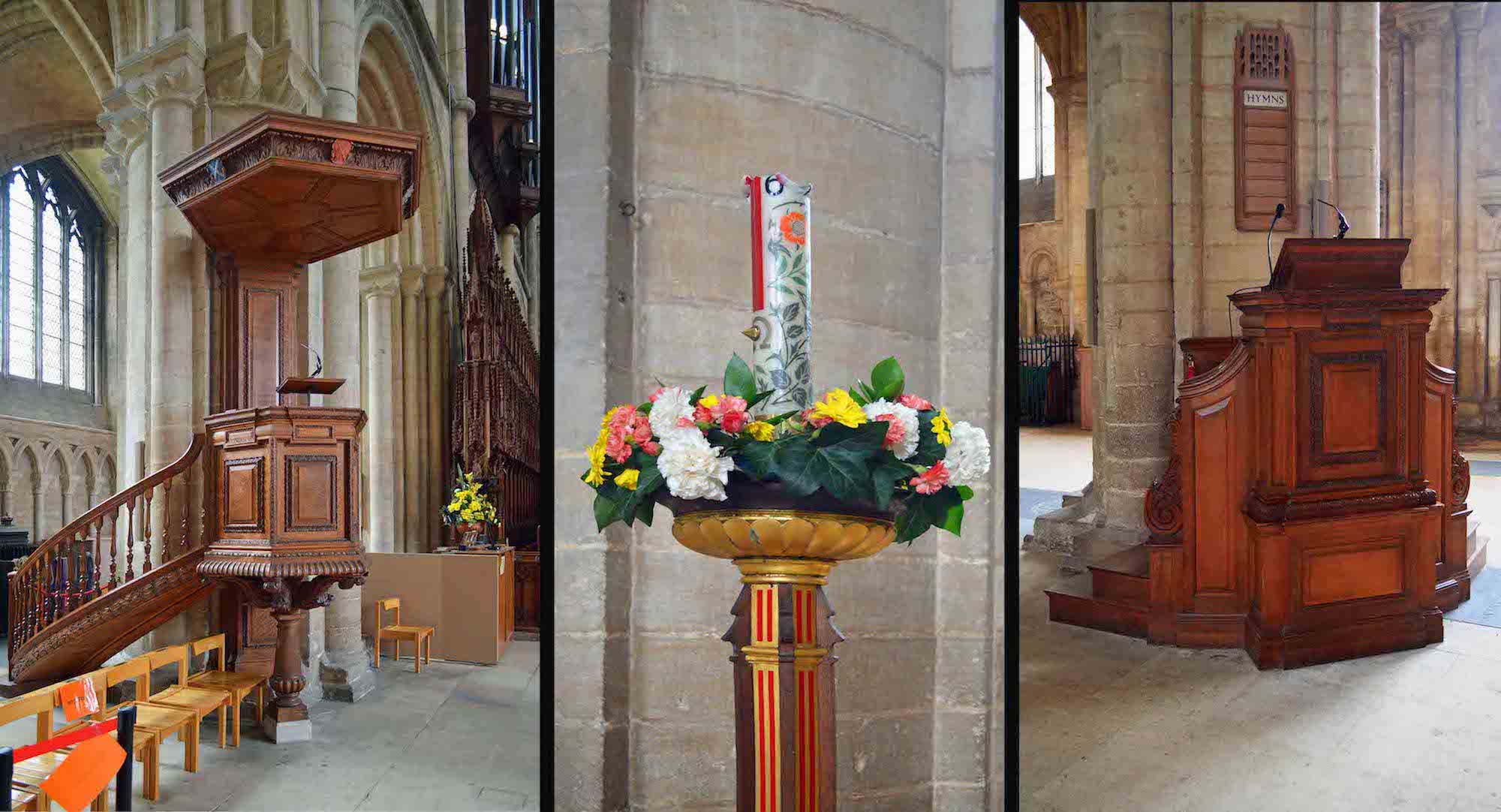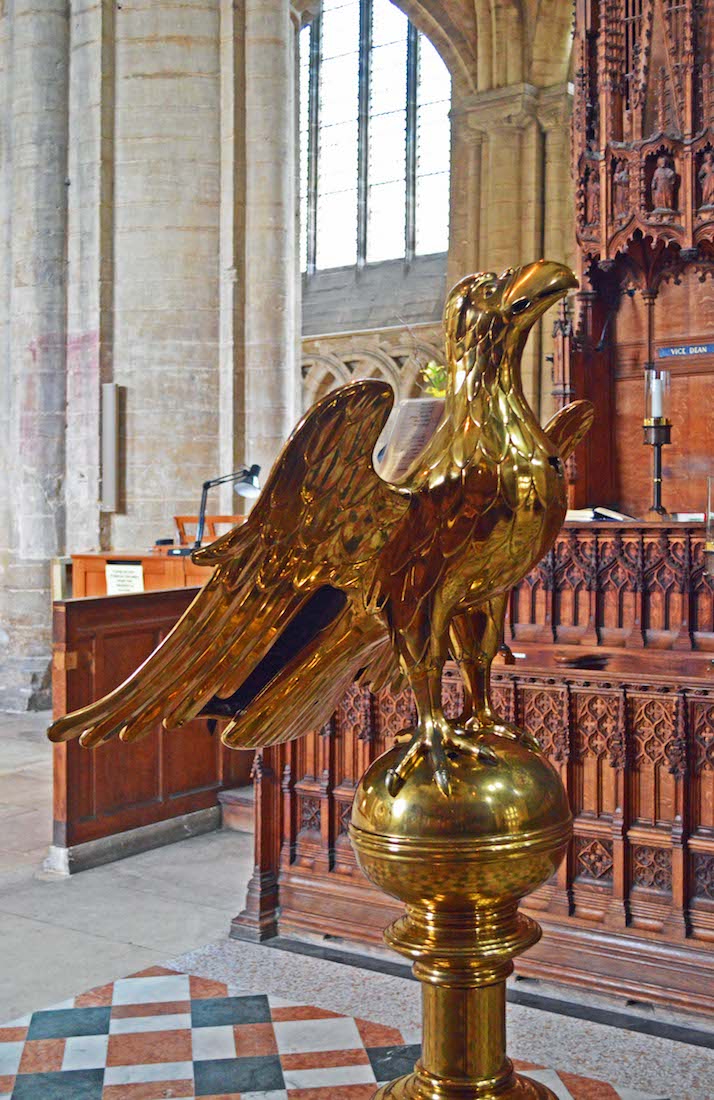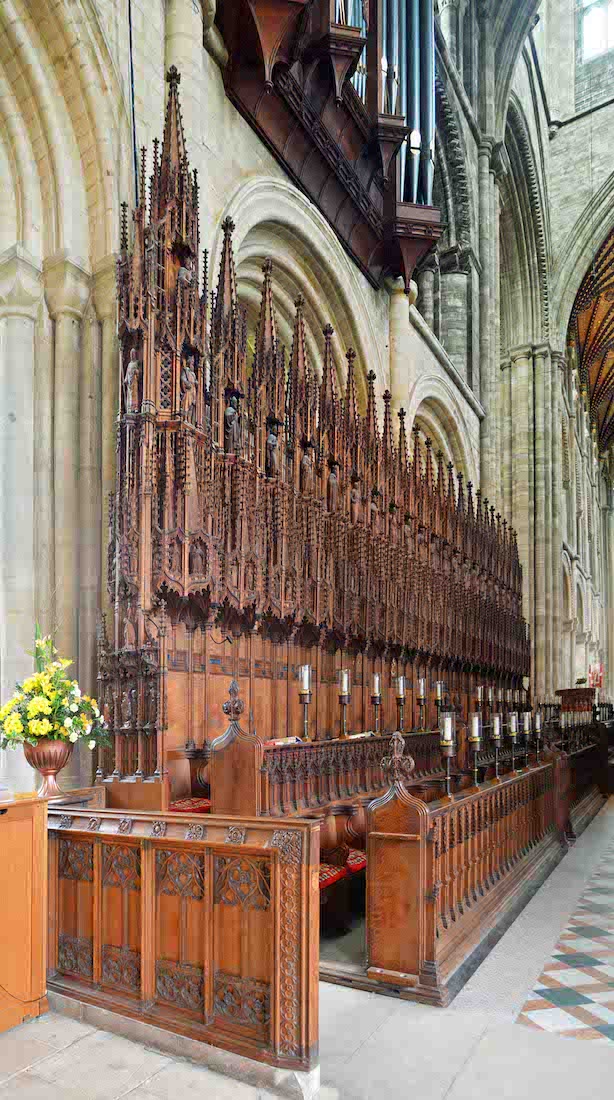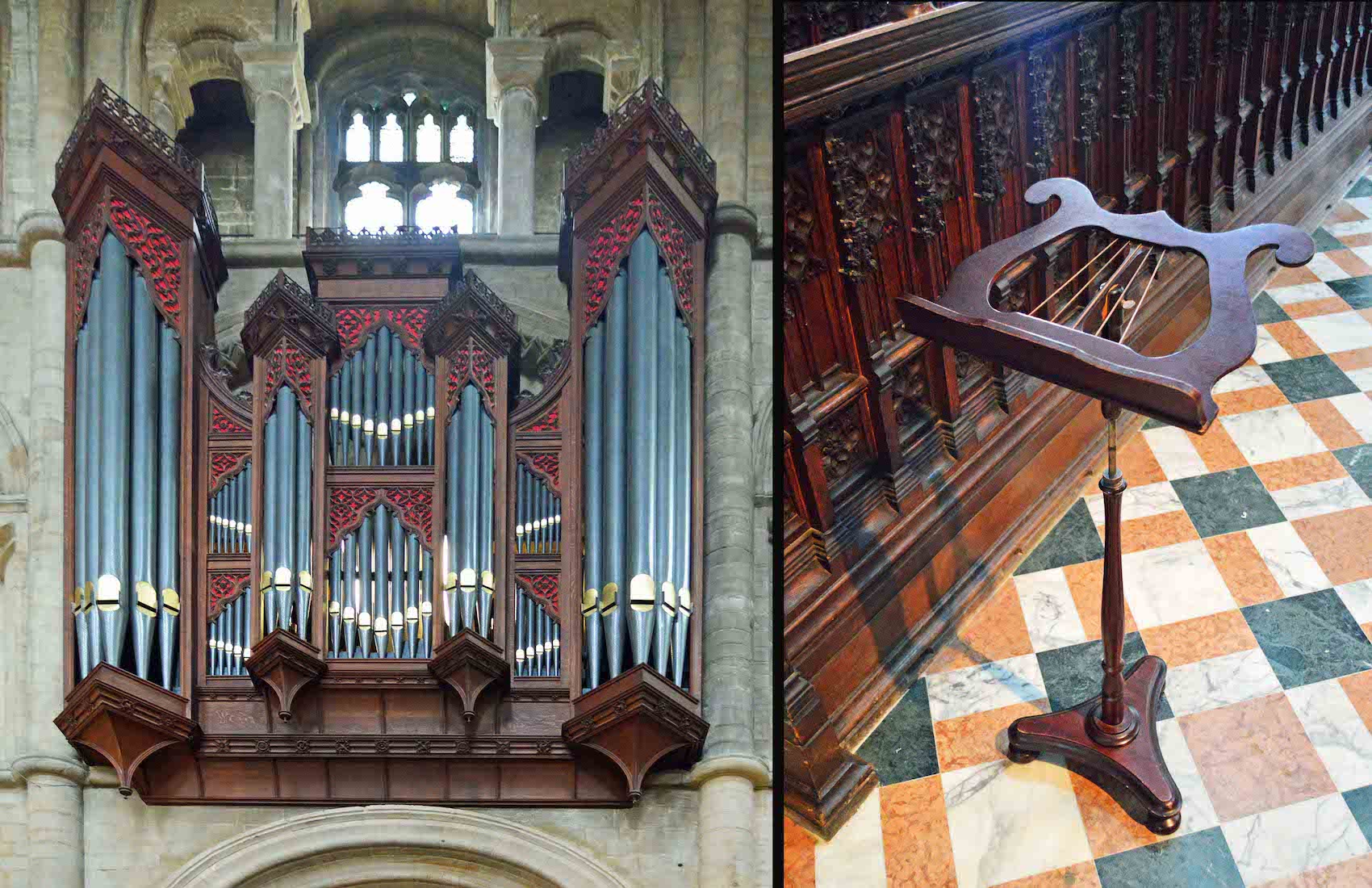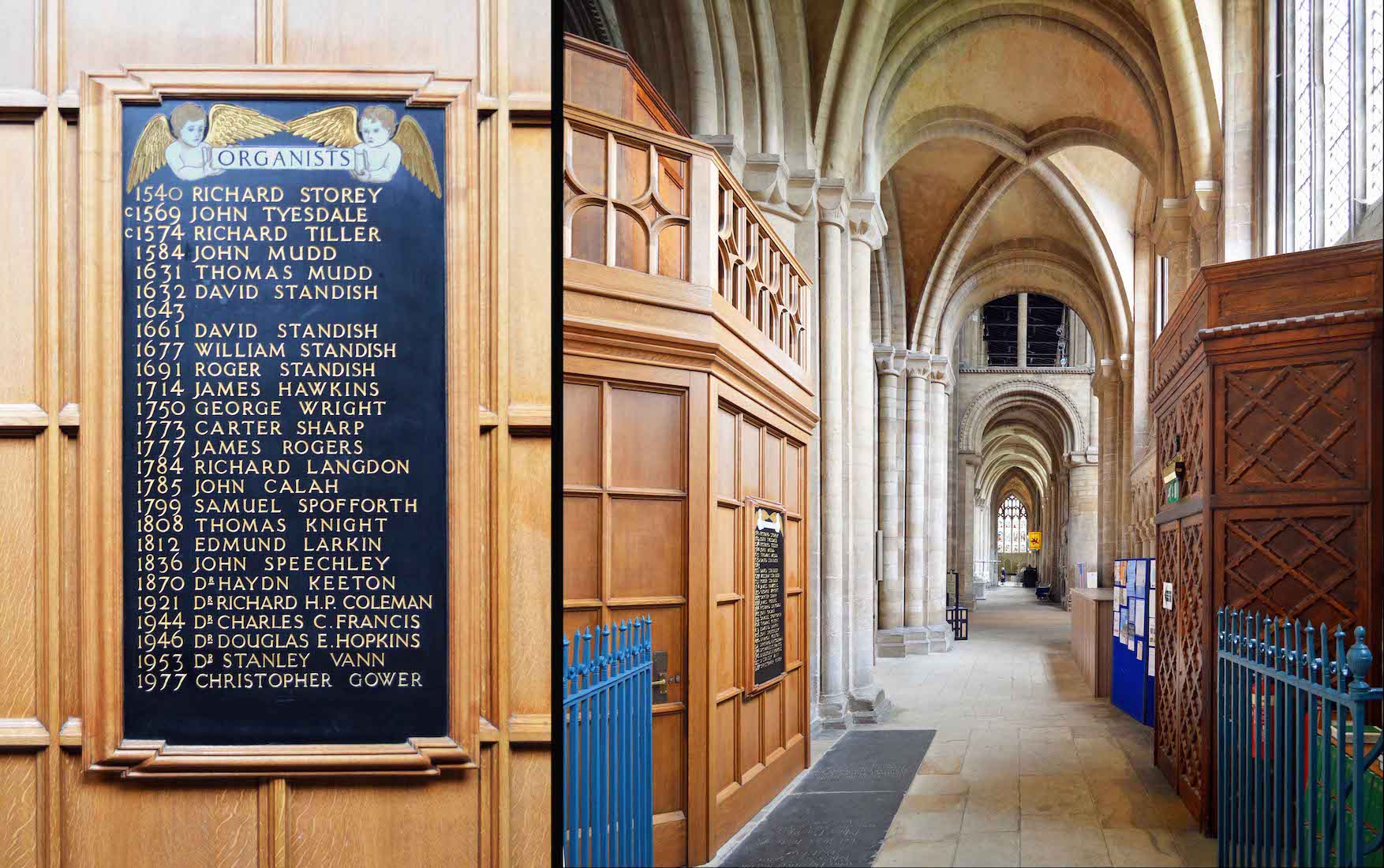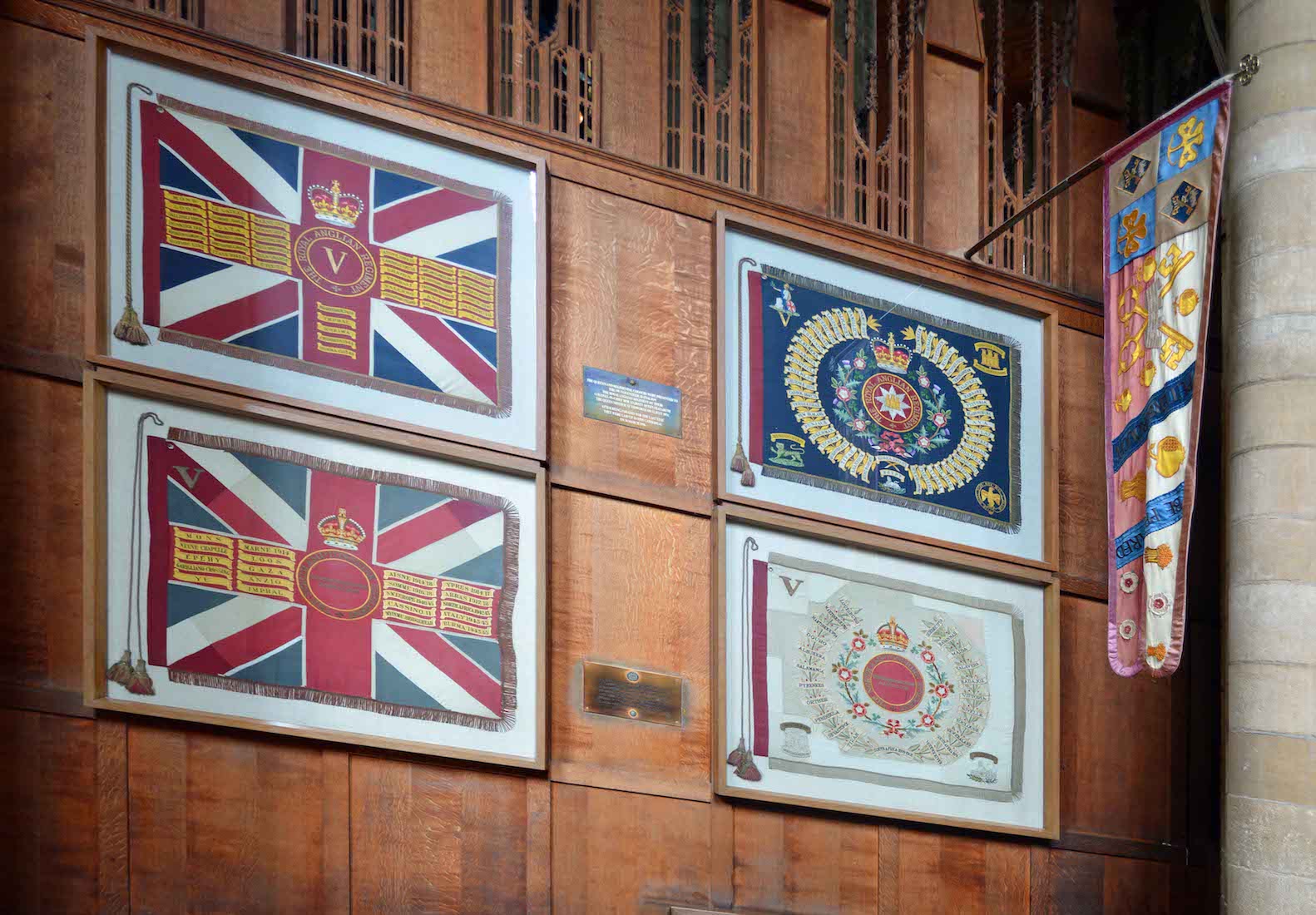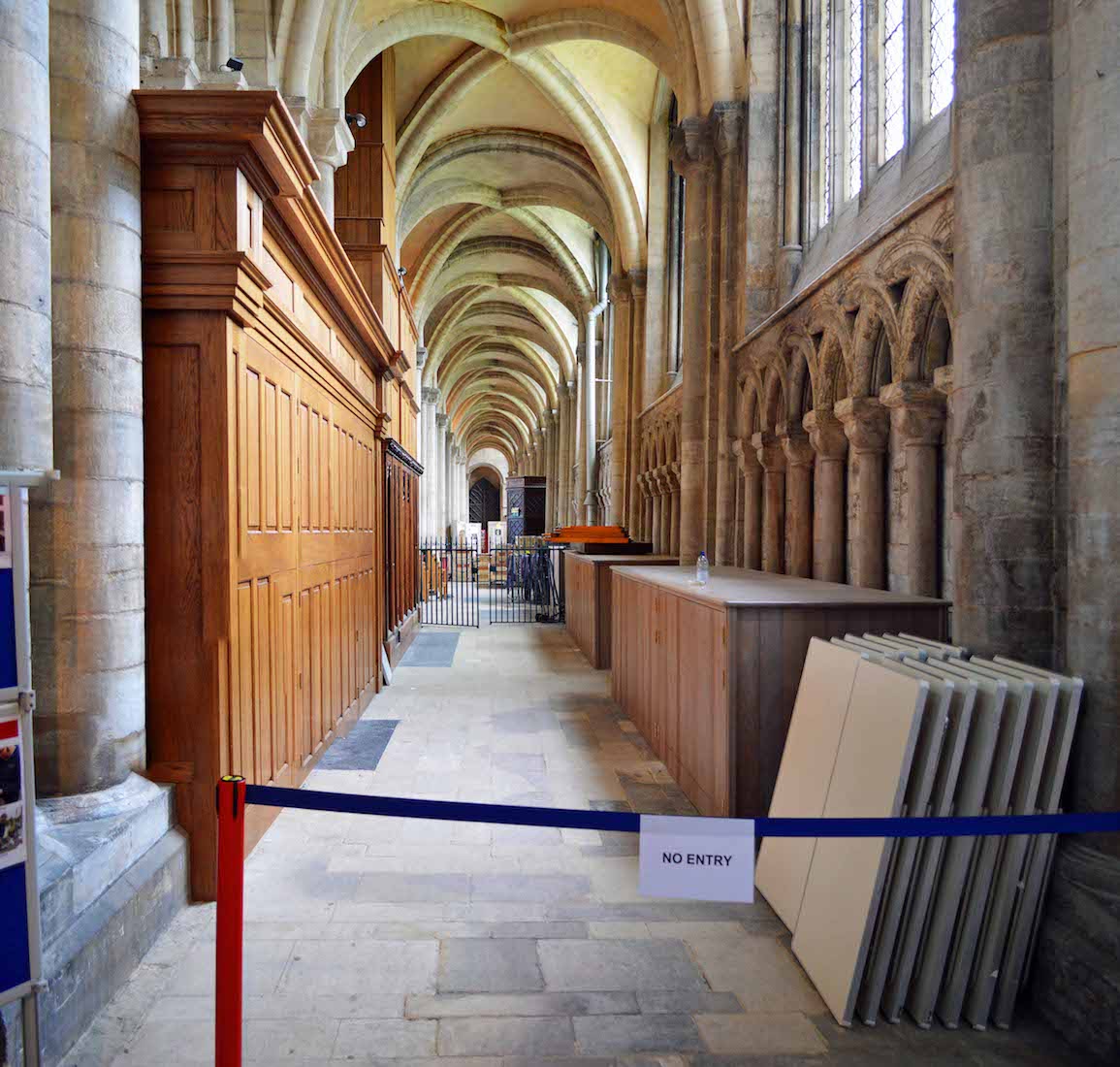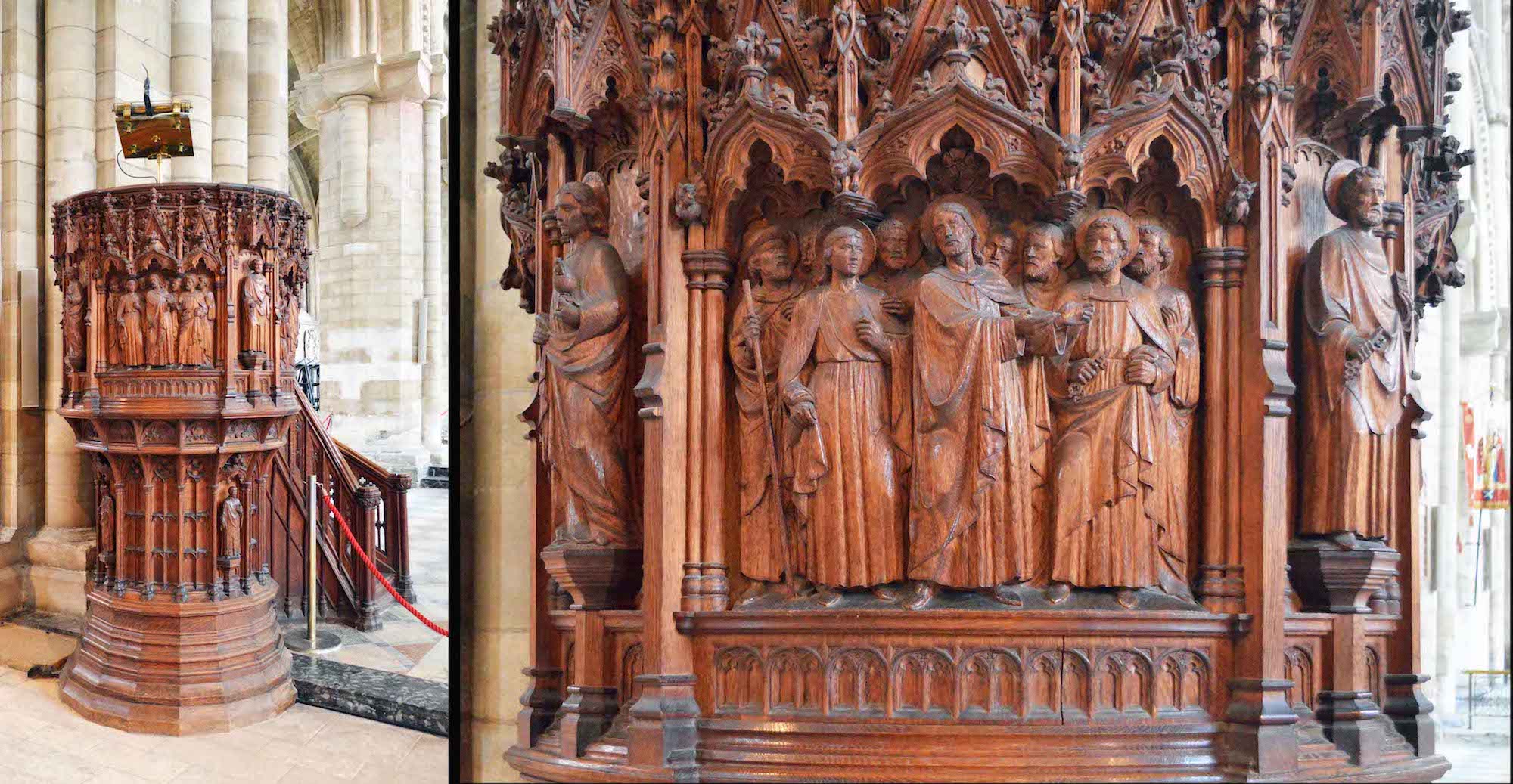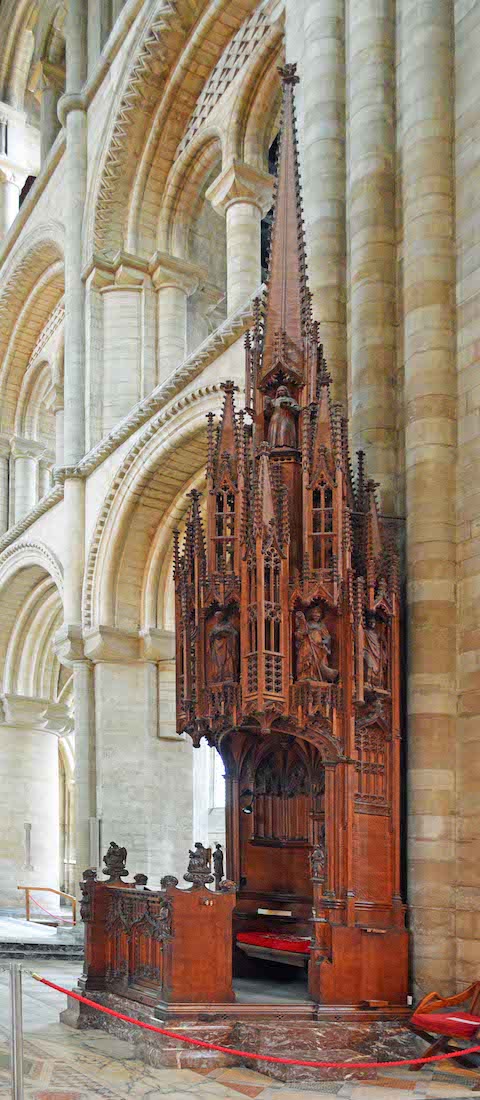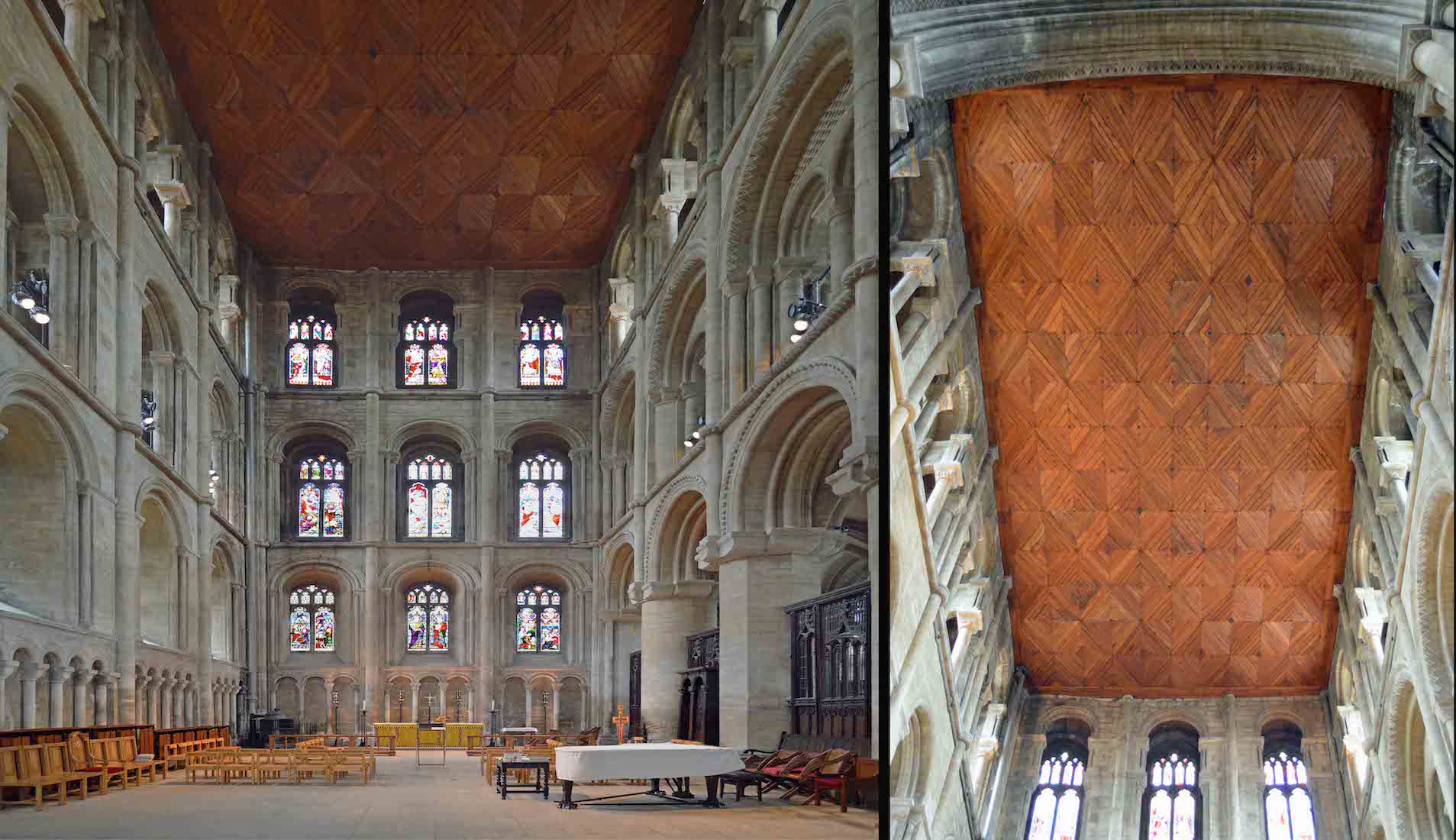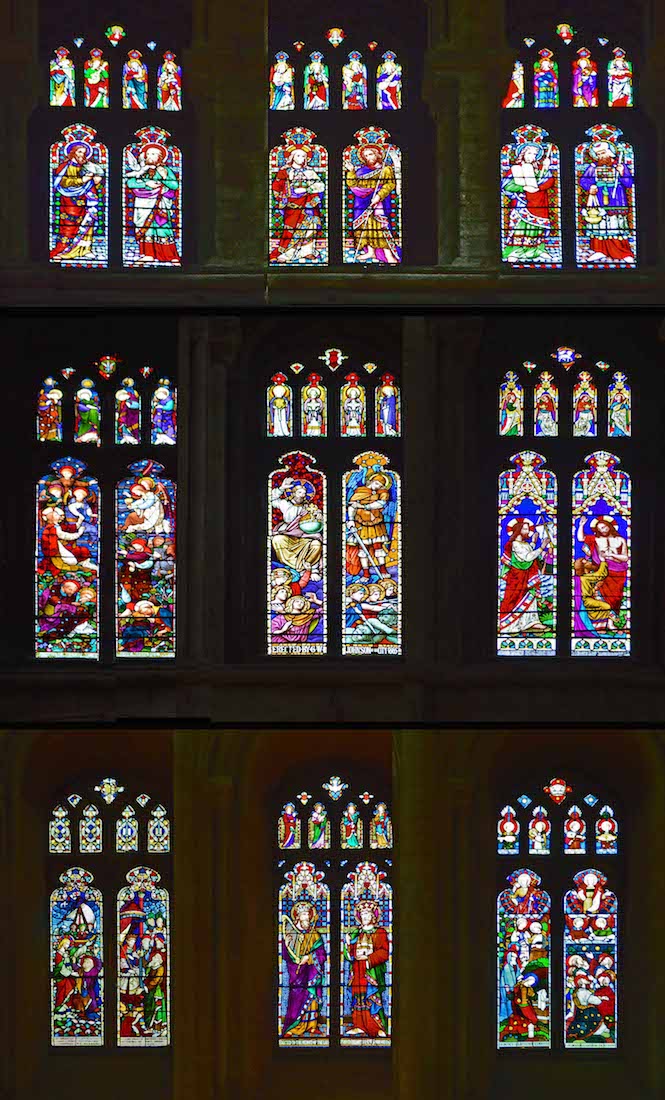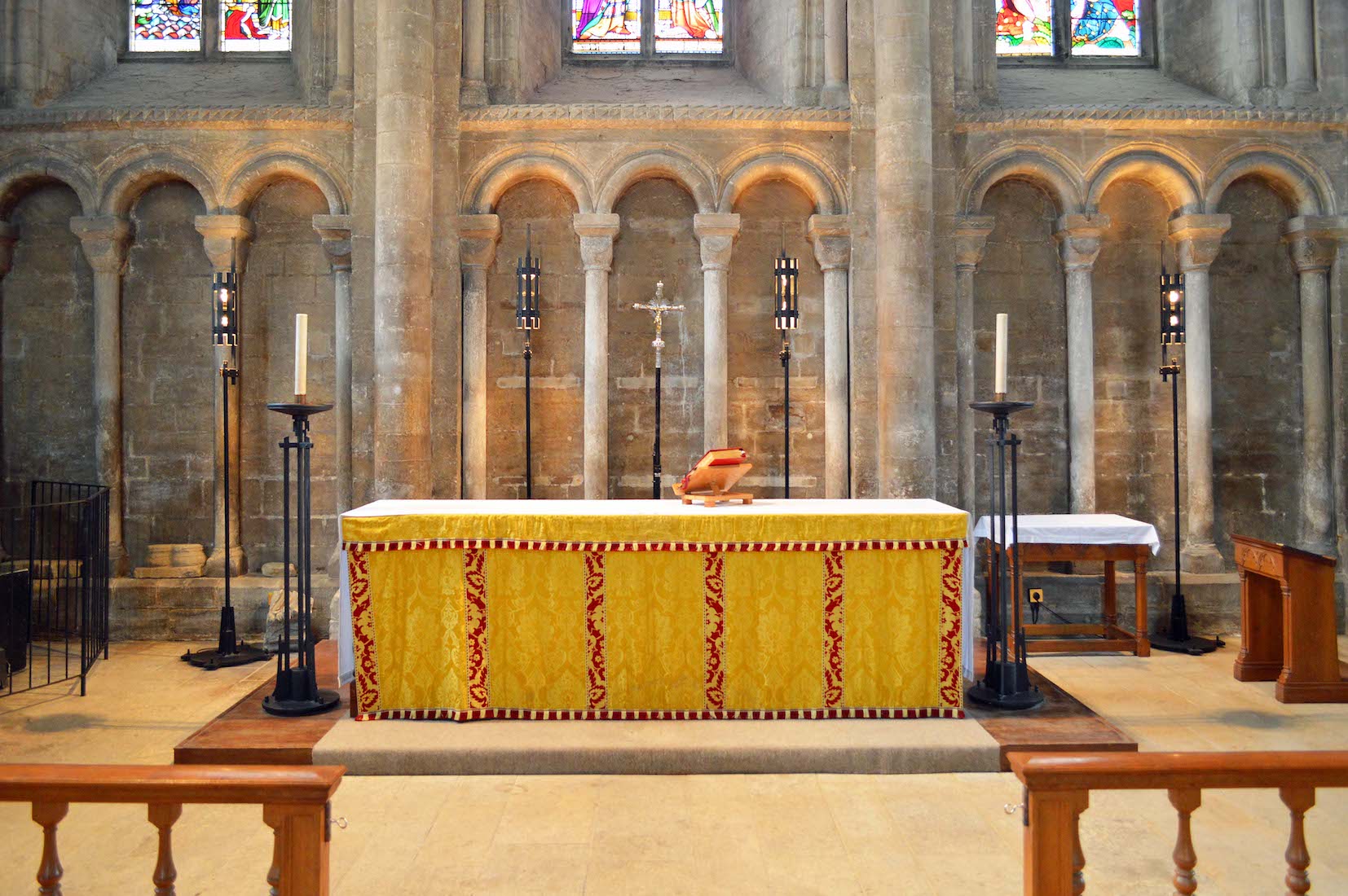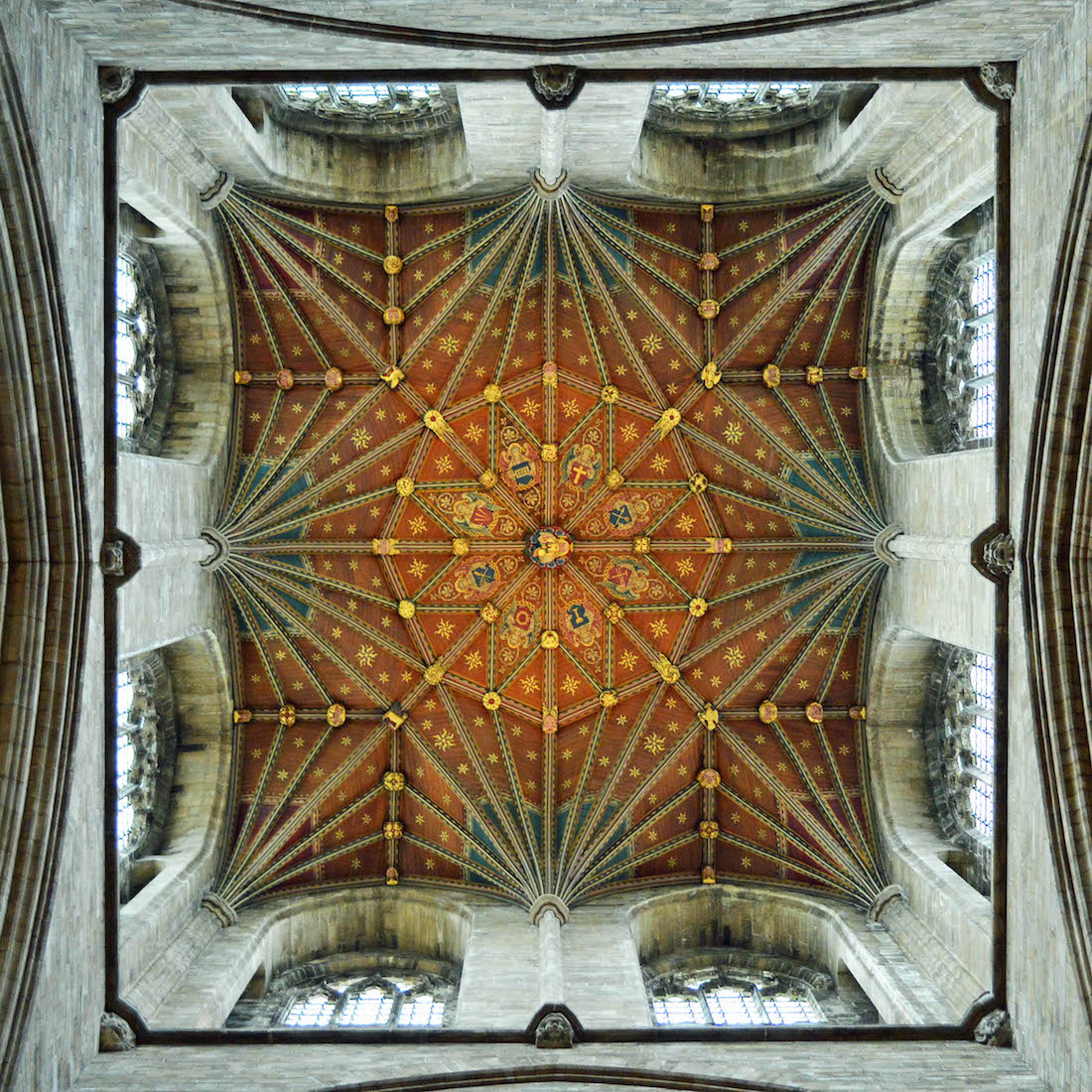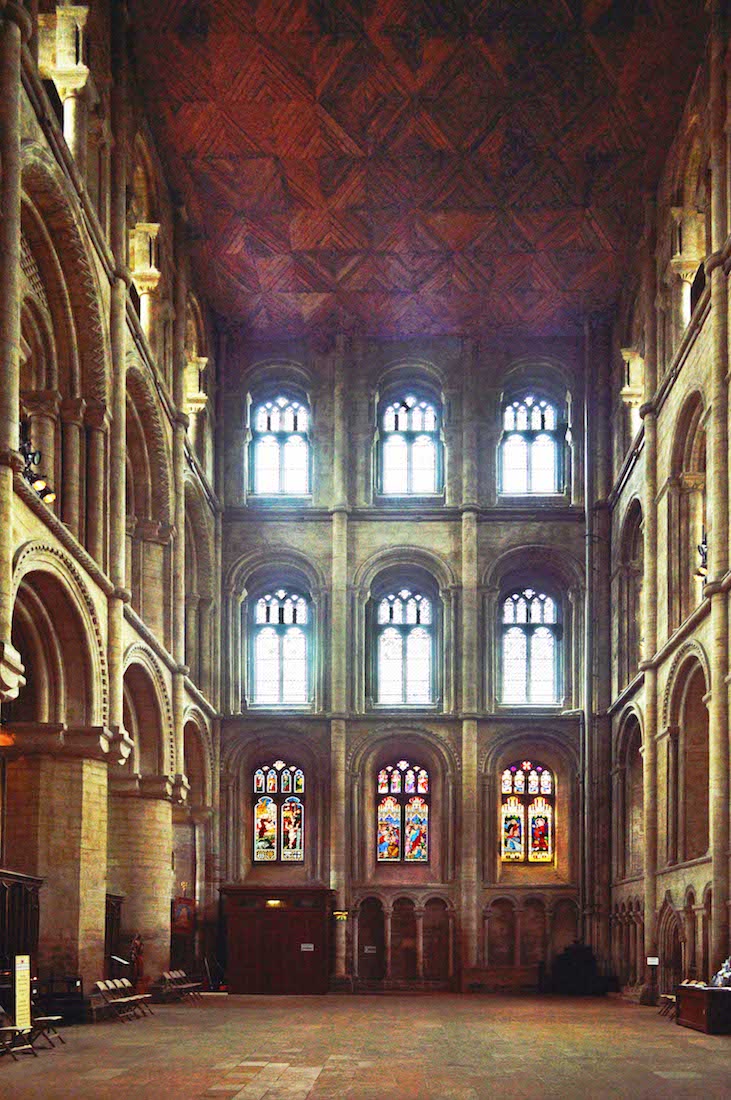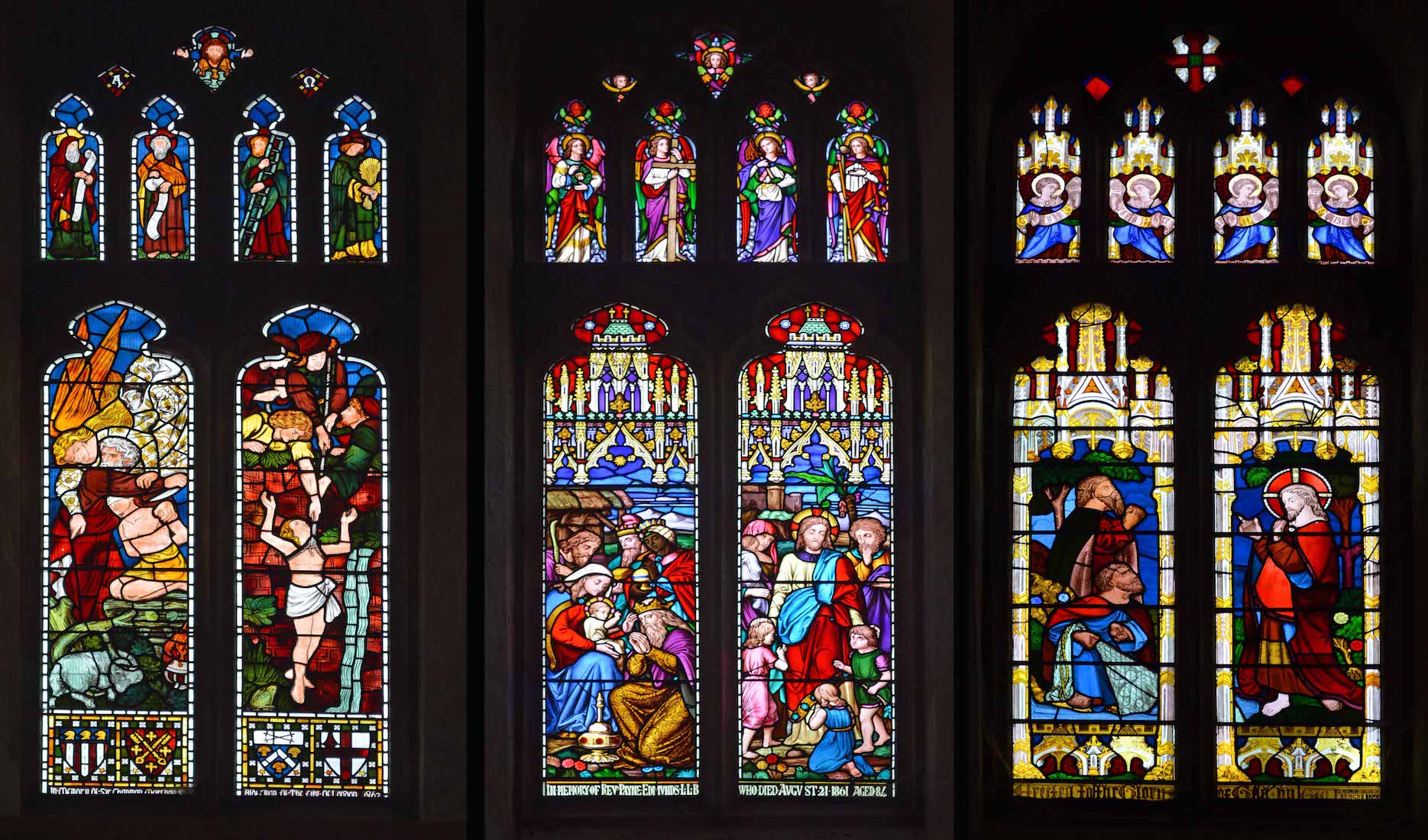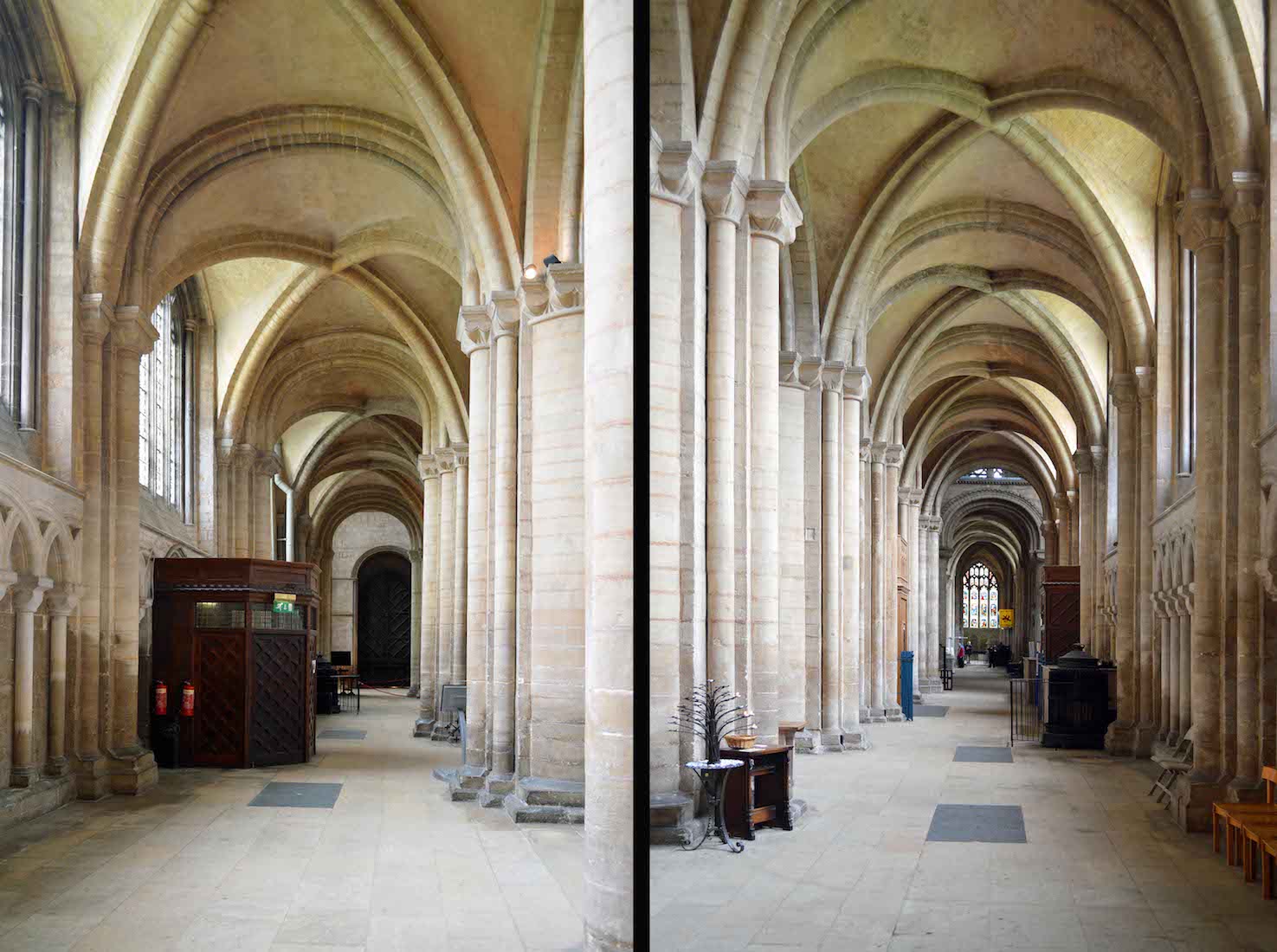
The South nave aisle is as bare as the North aisle – in fact, even more so without the display boards! Here we have two views, looking West and East. PLAN
42. ROOD CROSS

The rood (cross) bears the motto ‘stat crux dum volvitur orbis’ which translates as ‘the cross stands still while the world turns’. It has been suggested that enjoying the peace of a cathedral does often feel like a response to the cry ‘stop the world, I want to get off!’ The cross was designed by George Pace in 1975, while the figure of Christ on it is by Frank Roper.
43. NAVE ALTAR
The nave altar with rood above separates the nave seating from the choir area. In this view we see the pulpit and Paschal candle at left, and a reading desk at right. Just visible above the altar in the centre is the eagle lectern, and on either side, the choir stalls. Above the choir stalls at left are the pipes of the organ.
44. PULPIT, CANDLE, READING DESK
The pulpit has a traditional design and is used for proclaiming the gospel week by week. The Paschal candle illustrates that Christ is the Light of the world, and is used particularly over the Easter period. In the absence of a traditional lectern for nave use, I assume that the reading desk on the right is used for reading the Scriptures..
45. EAGLE LECTERN
The eagle lectern stands in the choir area, suggesting that this area is frequently used for services. The eagle is the bird thought to fly closest to heaven, and is the subject of Isaiah 40:31 – ‘They will soar on wings like eagles’.
47. CHOIR STALLS CARVING
It is always interesting to examine the choir stalls closely: there are often historical items to be found!
48. CATHEDRAL MUSIC
The Cathedral’s four-manual Hill organ is one of the finest of its kind in the country. Originally built in 1894, it has since undergone a number of refurbishments and is currently being re-pitched from ‘Old Philharmonic’ to ‘Standard’ concert pitch. Once at Standard pitch the organ can be used with other musical instruments, and choristers trained to sing at the same pitch used elsewhere. The work will be undertaken by Harrison and Harrison, organ builders, between July 2015 and spring 2017.
49. LIST OF ORGANISTS
Looking Eastwards up the South choir aisle, we find a list of organists from 1540 to 1977 on our left.
50. QUEEN’S AND REGIMENTAL COLOURS
Close by here is this display of the Queen’s and Regimental Colours. The blue plaque reads: The Queen’s and Regimental Colours were presented to the 5th (Volunteer) Battalion the Royal Anglican Regiment by their Colonel-in-Chief Her Majesty Queen Elizabeth the Queen Mother at Tidworth on 12 July 1974. After being paraded for the last time they were laid up in this Cathedral on 30 March 1996.
51. NORTH CHOIR AISLE LOOKING WEST
We move across to the North choir aisle, only to find it closed off. Some maintenance being carried on here, but not much detail of interest can be seen.
52. CHOIR PULPIT
Many large cathedrals have a nave pulpit and a choir pulpit for services held in different places. The choir pulpit here is quite elaborate. The central panel shows Jesus with his disciples, and there are four individual figures, one of which is holding that identifying key!
53. CATHEDRA
This cathedra dates from 1883 when much of the earlier vandalized woodwork was replaced. The cathedra is the Bishop’s chair, and the status of this Church as a Cathedral comes about because of the presence of this chair. The Latin for ‘seat’ is ‘cathedra’. Cathedra are often big and grand: I notice that this one has a comfortable cushion!
55. TRANSEPT WINDOWS
The pairs of lancets in this wall illustrate various scenes from the Old and New Testaments. For example we find Jesus with Peter, Judgement Day, King David and King Solomon, Jesus healing, Jesus teaching from the boat, Jesus rising from the tomb.
56. TRANSEPT ALTAR
The North transept has a large altar bearing a crucifix and surrounded by candles. The presence of seating and an altar rail shows that this area is used for services.
57. TWO CRUCIFIXES
The delicate silver and gold crucifix at left is on the transept altar. At right is a more iconic cross, more in the style of the rood cross.
58. CROSSING ROOF
The transepts meet the main axis of the Cathedral in the square crossing beneath the central tower. The roof of the crossing is of attractive and elaborate design. The roof has a star design at the centre, and is covered with small stars. Often a portion of the crossing roof comes away to allow for building material to be hoisted up into the tower or spire, but that is not necessary here with the top of the tower being nearly flat.
60. SOUTH TRANSEPT WINDOWS
Only the three bottom windows of the South transept have had stained glass added. From the left we have: Abraham and the sacrifice of Isaac, and Joseph being lifted from the pit; the wise men come to worship the baby Jesus, and Jesus with the children; Jesus calls the disciples James and John from their fishing nets. The left pair were designed by Dante Gabriel Rossetti. The centre pair were by A. Gibbs (1863).


